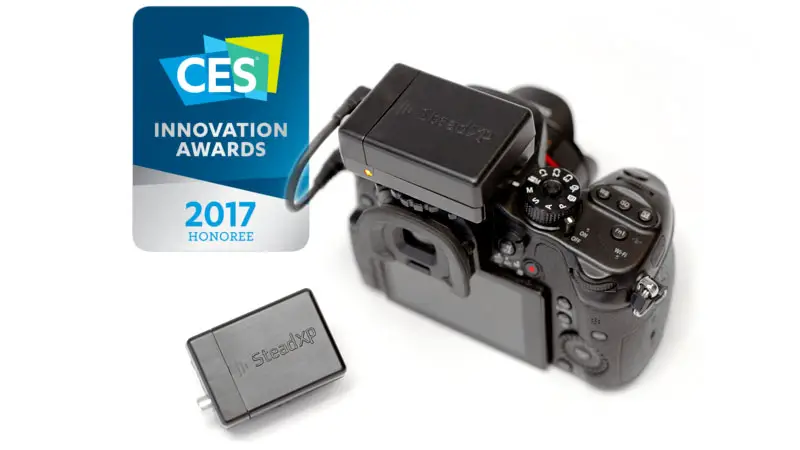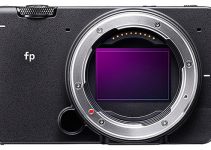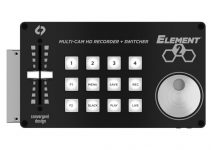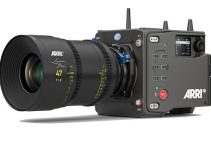A gimbal just a little too bulky for your setup? There is a new tool on the way called the SteadXP that can help dramatically improve stabilization in post. It is a tiny device that can be easily mounted to your camera and when attached it’ll record data from it’s gyroscope for use later on. That’s a much smaller and easier setup for everyday shooting than using a gimbal.
If you are curious to learn what this device is and how it might be able to transform your stabilization workflow then filmmaker Tyler Stalman has put together a comprehensive video on the SteadXP.
It actually works in a fairly easy-to-understand way. First, you just need to mount it to your camera, probably in some sort of shoe either direct to the camera or on a cage – just make sure it moves in the exact same way as the camera itself as you shoot.
Then, you connect the audio output to your camera’s audio input. The SteadXP will send a signal that can be deciphered in post that will sync up your footage with this audio track with the data recorded by the SteadXP.
The data recorded is gyroscopic data of how the camera moved during shooting. It does have a weird way to start up that requires you to do a weird sudden jerking motion upwards with your camera when you start. Plus, you will need to calibrate your camera/lens combination before even heading out to shoot.
Calibration is time-consuming as it requires shooting a lot of test footage of a chart and then using SteadXP’s software to analyze it. Some combinations are pre-calibrated, but if you aren’t lucky to have it done already you have to do it yourself.

Image Credit: SteadXP
So will it replace a gimbal? Unfortunately, not really if you have the choice. Gimbals are more effective and will be a better tool in the long run. The SteadXP is more of a specialty tool that can supplement a full kit. This device is good for ultra-compact setups or for getting additional stabilization when needed.
This type of data-based gyroscopic stabilization isn’t brand new, even Sony is starting to add this internally to its cameras. It works very well if you can afford the post-processing time to render out the stable footage. It also is different than plain old digital stabilization.
Digital stabilization is trying to analyze the movements in post and tries to smooth out movements based solely on the frame data. Gyroscopic stabilization relies completely on the actual movements on the camera and accounts for that in post. It’s a lot cleaner and eliminates that weird warping effect common with digital stabilization.
The SteadXP also feels like an unfinished product at this moment. There are weird quirks for functionality, like how you need to unplug and replug the audio cable to start new tracks.
It’s certainly nice to see, and could be perfect for very specific situations, but it should still be a rare option on set and will require a good deal of experience and practice to get the most out of it. If you know what you are getting into here you might find it to be the perfect solution to a tough problem.
What do you think about the SteadXP?
[source: Tyler Stalman]
Order Links:
- SteadXP (SteadXP)
Disclaimer: As an Amazon Associate partner and participant in B&H and Adorama Affiliate programmes, we earn a small comission from each purchase made through the affiliate links listed above at no additional cost to you.




